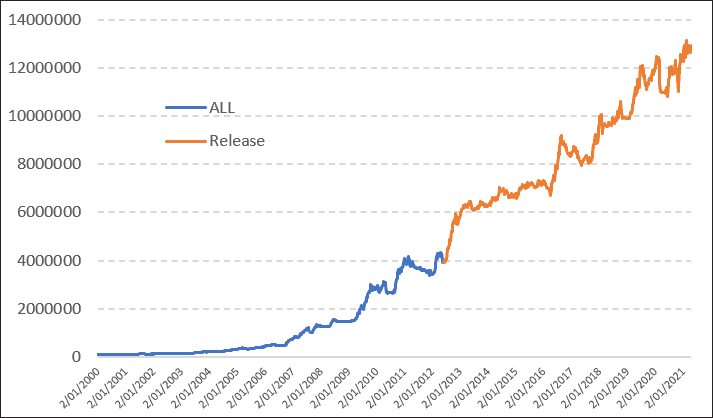
Momentum Investing
Momentum investing forms the basis of the majority of our trading strategies. Does It Pay To Tweak…?
I’m a firm believer of being open to new ideas and testing their potential within the context of one’s own research and strategies.
For example, I started my trading career because I happened to look over the shoulder of a broker who, right then and there, just happened to be plotting a moving average crossover system (I sometimes wonder what I’d be doing now if he’d been reading The Daily Telegraph instead?).
The main trend strategy I still use today was based on the principles of the well known Aberration strategy developed in the 90s by Keith Fitschen. Whilst Aberration has fallen by the wayside and Fitschen’s beliefs have since changed, the foundations remain in place.
Which brings me forward to today.
Over the last few years we’ve been working on a limited-effort momentum style strategy, a strategy for the busy person with family, career and hobbies.
A strategy where positions are managed just once a month.
Yet still offered strong returns.
But we had a few holes that we couldn’t quite fill. Some of the answers just alluded me.
Until I read Stocks on the Move by Andreas Clenow.
I had one of those precious ‘light-bulb’ moments (I did a review of the book HERE) and he was able to fill one of those gaps.
And from there we’ve been able to move forward and complete our research.
Momentum refers simply to price persistence. It is measured between two points in time, usually quarterly, semi annually or annually. Clenow uses quarterly (90 days).
There are many ways to measure momentum. In Dual Momentum, Gary Antonacci uses Rate of Change. Clenow uses Linear Regression Slope. We’ll do something a little different.
Clenow uses two different filters. An individual stock filter of 100-days and an Index Filter overlaid on the S&P 500 of 200-days.
Lastly, Clenow rebalances the individual positions every week and the portfolio every 2-weeks. Because of commission drag issues, and the ‘ease of use’ mandate, this was not an option for us. Instead we use a single monthly adjustment.
So in summary we’re calculating momentum slightly differently and rebalancing just once a month so we can save on commissions and enjoy life a little more.
Sample Data
In this first test we’ll compare like-for-like, that is:
momentum lookback = 90 days
stock filter = 100 days
index filter = 200 days
| 1999 – 2014 | S&P 500 | Clenow | Momentum |
| Annual Return | 5.2% | 12.3% | 12.2% |
| Max Drawdown | -55% | -24.0% | -23.5% |
So it appears that the changes haven’t enhanced the strategy, just managed the same with less work.
The issue I have is one of data snooping. Why is each lookback period set to different lengths? Have they been chosen to amplify returns and if so, will they differ in the future? To provide a little more robustness in this second test we’ll use the nominal number of trading days on the NYSE across all three variables:
momentum lookback = 252 days
stock filter = 252 days
index filter = 252 days.
| 1999 – 2014 | S&P 500 | Clenow | Momentum |
| Annual Return | 5.2% | 12.3% | 14.4% |
| Max Drawdown | -55% | -24.0% | -23.5% |
Lastly, let’s use 5-years of out-of-sample data, namely 4-years prior 1999 and 1-year post 2014.
| 1995 – 2015 | S&P 500 | In-Sample | Out-Sample |
| Annual Return | 5.2% | 14.4% | 17.7% |
| Max Drawdown | -55% | -25.5% | -23.5% |
What we’re seeing here is solid robustness. Regardless of the method used to calculate momentum, regardless of the different lookbacks and regardless of the rebalancing, the results are ‘reasonably’ consistent across the board.
That’s always reassuring for a systems trader.
This strategy is now live. Trish and I have allocated some assets to trade alongside our clients.
If you wish to invest alongside us and receive buy and sell signals —> START HERE

